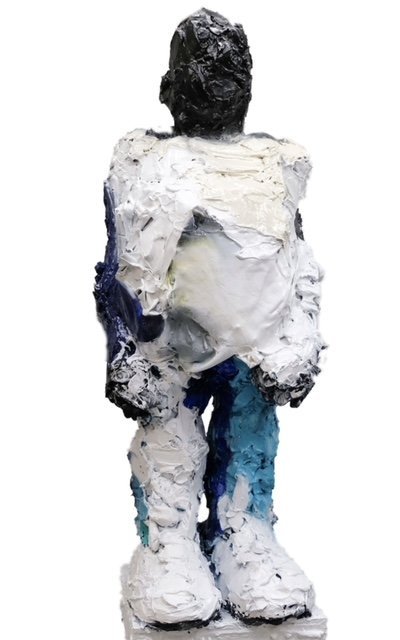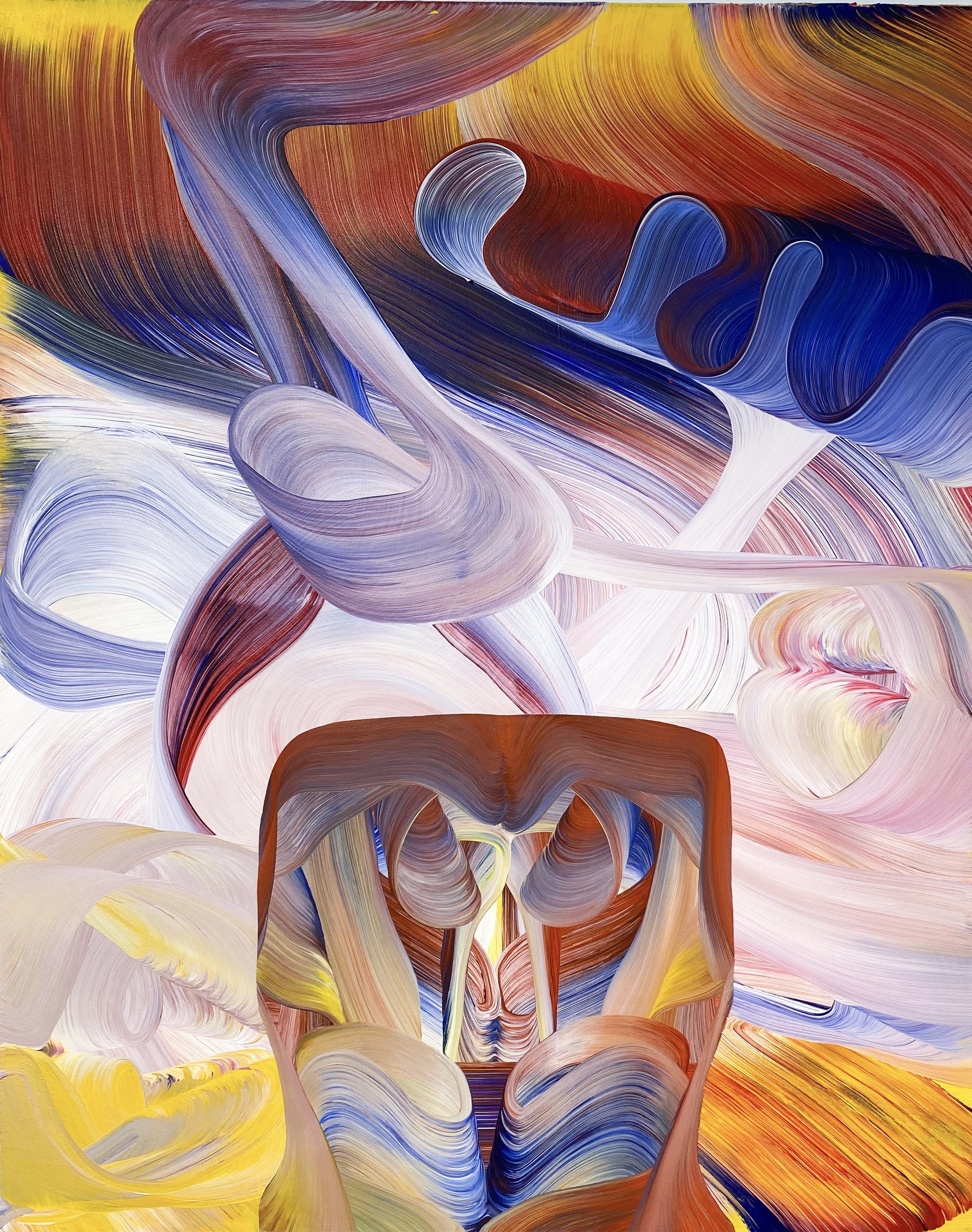Abigail Ogilvy Gallery is proud to present Layered Truths, a group show featuring James Parker Foley, Josh Jefferson, and Lavaughan Jenkins. The show brings together three unique painting styles that explore figurative storytelling.

Installation view: Layered Truths (on view March 2 - April 17, 2022)

Lavaughan Jenkins, Message from a Black Man, 2022. Acrylic and spray paint. 42 x 13 x 12 in.
Lavaughan Jenkins paints with a three-dimensional, sculptural technique that incorporates layers of paint to form rich, freestanding figures. Jenkins reflects that, “with three-dimensional paintings…everywhere you look, you can see a different painting because it changes with every angle.” His most recent painting, Message from a Black Man, was created during his residency at the Fine Arts Works Center. The work stands powerfully at 3.5 feet tall, depicting the quiet countenance of the single Black individual.
Josh Jefferson continues this theme of layered painting as he reveals, “I don't paint a painting, I build one.” In his Big Brush series, Jefferson uses two brushes at the same time to create balanced yet free flowing work. He describes this fresh method as a way to get into the painting from the inside out. A recent studio visit brought us to a vibrant room filled with collage components that lived and worked alongside Jefferson until he decided where they would belong in his compositions.
James Parker Foley paints as a reclamation of power. They state: “painting is becoming for me a place where I get to make all the rules, and I can build my own feminist universe where women are awesome and terrifying and in total control.” Parker Foley’s works embody this sense of feminist assertion, often conveying worship and deification through their vivid hues and rich textures.
Through their own distinctive styles, all three artists take on themes of storytelling, both in the personal contemporary as well as the mythic and ancient. Each painting relays the artists’ truths, layered in paint as figures in a bigger story. Painting is a central part of both life and identity for each artist.

James Parker Foley, Raising the Dory, 2022. Oil on linen. 46 x 42 in.
Parker Foley explores the spiritual and ritualistic through works like Raising the Dory and The Departure. Often, their work incorporates mythic journeys and quests, centering on one or more heroic figures. They incorporate yonic symbols, portrayed as divine in Raising the Dory, where two gossamer figures raise a boat over their heads in exaltation. Parker Foley leans into the epic, and describes the figures’ task as Sisyphean “in the sense that they’re stuck doing this task as long as the painting survives.”
Jenkins also explores this mythic exaltation of women in his work as nearly all of his subjects take on a female form. John Greiner-Ferris writes in his article, Why Lavaughan Jenkins is Not a Sculptor, that this subject choice pays “homage to the women in [Jenkins’] life. The list begins with his mother, who raised him as a single parent, and his grandmother. It also includes two teachers in Florida who kept him in school when he wanted to drop out, and the gallerists who gave him his first breaks, of whom he says, ‘They didn’t have to take a chance on my work, but they did.’” Jenkins’ storytelling is personal, but also harkens back through history to return Black female figures to a place of worship.

Josh Jefferson, Bird on a Wire. Acrylic, flashe, and cut canvas on canvas. 48 x 60 in.
Jefferson’s work also draws lines from the personal to the ubiquitous as his work expresses “universal, mystical and ancient truths about family relationships, pets and self-identity.” Pulling from Aztec iconography, he spins a contemporary twist on the ancient to relay a new narrative that appears simultaneously original and familiar. Storytelling and technique are central to each of these artists’ works as their pieces tell stories that pay homage to the classics through new and innovative artmaking techniques.
James Parker Foley’s spooky landscape paintings are populated with a cast of faceless characters. Their works are derived from studies and sketches of coastal Maine, which becomes their setting for fantasy. Their oil paintings are characterized by saturated, optical color work, an expansive vocabulary of mark-making, and lanky, ambling figures. By blending the historied Maine traditions of horror and landscape, they create scenes in which the body is a force within nature. The scenes range from moments of peril—passive subjects being touched, grabbed, and stepped on to moments of force; subjects striking, lifting, and strangling. The faceless bodies contribute to the open narrative structure of the work—the lack of expression allows the figures to coolly disassociate from the proceeding activities. Self-possessed and self-aware, the paintings themselves gaze back toward the viewer.
Josh Jefferson was born in St. Petersburg, FL in 1977. He attended The School of the Museum of Fine Arts in Boston. He has shown work both nationally in New York, San Francisco, Los Angeles, and internationally in Amsterdam, Milan, and Quezon City. He currently lives and works in Boston with his wife and son.
Lavaughan Jenkins is a painter, printmaker, and sculptor. He was raised in Pensacola, Florida and currently creates his work in Boston, MA. He received a BFA from the Massachusetts College of Art and Design in 2005. Since that time, Jenkins has become a recipient of the 2019 James and Audrey Foster Prize awarded biennially by the Institute of Contemporary Art / Boston. In 2016, he was named Emerging Artist of the year at Kingston Gallery in Boston, MA, Jenkins is a recipient of the 2015 Blanche E. Colman Award and in 2002 received the Rob Moore Grant in Painting. He has exhibited his work most recently at venues such as Abigail Ogilvy Gallery (Boston), The Painting Center (NY), Suffolk University Gallery (Boston), and Oasis Gallery (Beijing). Jenkins donates annually to the Massachusetts College of Art and Design Auction which supports student scholarships.

Add a comment